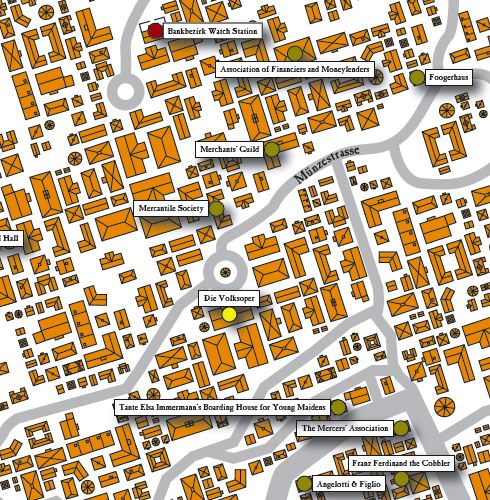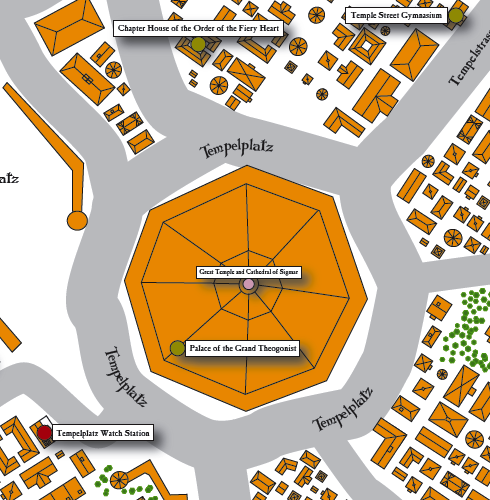 Die Volksoper Altdorf, or Altdorf People’s Opera, is a major opera house on Münzestrasse in the Werksviertel Bezirk. Some of my colleagues have expressed astonishment over the fact that there is so much interest in the opera, that such an alternative to the Imperial Opera House can exist and even thrive in the capital. But the truth is that one of the most popular pastimes of the Altdorf middle class is attending the Volksoper. Having spent time at the establishment itself, I am less surprised than my scholarly friends; the Volksoper offers fiery passion, blood-spurting violence, hilarious comedy and all this scored by some of the finest composers from history. The focus of the Volksoper is light entertainment, and its repertoire consists of opera, operetta and muscials.
Die Volksoper Altdorf, or Altdorf People’s Opera, is a major opera house on Münzestrasse in the Werksviertel Bezirk. Some of my colleagues have expressed astonishment over the fact that there is so much interest in the opera, that such an alternative to the Imperial Opera House can exist and even thrive in the capital. But the truth is that one of the most popular pastimes of the Altdorf middle class is attending the Volksoper. Having spent time at the establishment itself, I am less surprised than my scholarly friends; the Volksoper offers fiery passion, blood-spurting violence, hilarious comedy and all this scored by some of the finest composers from history. The focus of the Volksoper is light entertainment, and its repertoire consists of opera, operetta and muscials.
Of course, this is seen as vulgar entertainment by the upper class and the pretentious cultural élite, but this bothers the clientele little, as the seats are sold out almost every night. Each season the Volksoper gives around three hundred performances of twenty productions, closing only during the hottest months of the year, as other open-air entertainments are more popular during those times. The Volksoper has 900 seats, and room for about as many standees.
The most famous plays that have been staged at the venue, and which are habitually restaged every couple of years are such masterpieces as;
“The Angry, the Happy, and the Watchman”, a tale of three mercenaries seeking the same gold treasure in the ruins of Mordheim.
“The Merry-Go-Round”, a farce set in Altdorf guild circles, with plenty of mistaken identities and pratfalls.
“The Bat”, a dark and violent tale of revenge and the mental decay of a noble turned vigilante.
Adolphus Altdorfer



